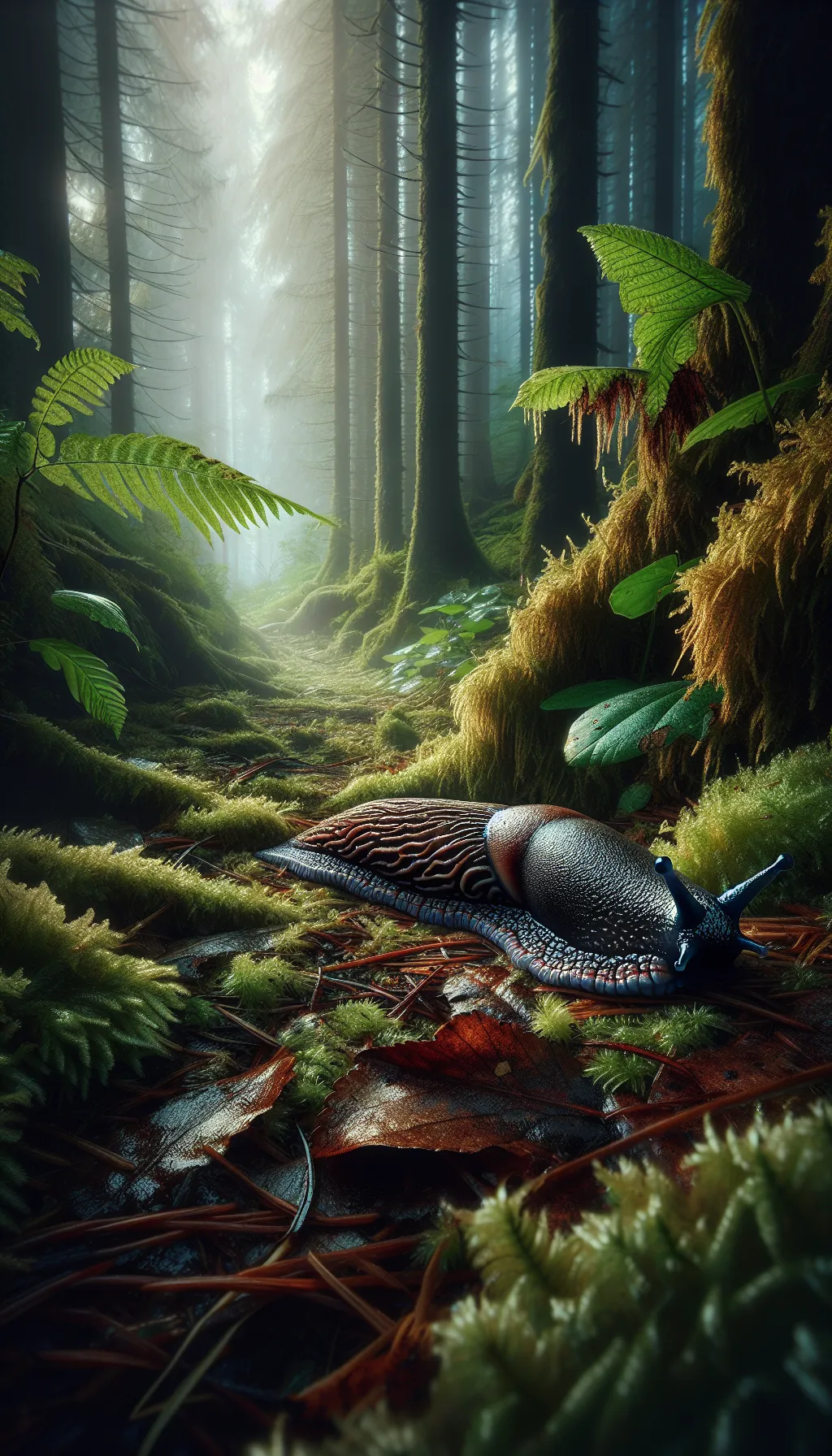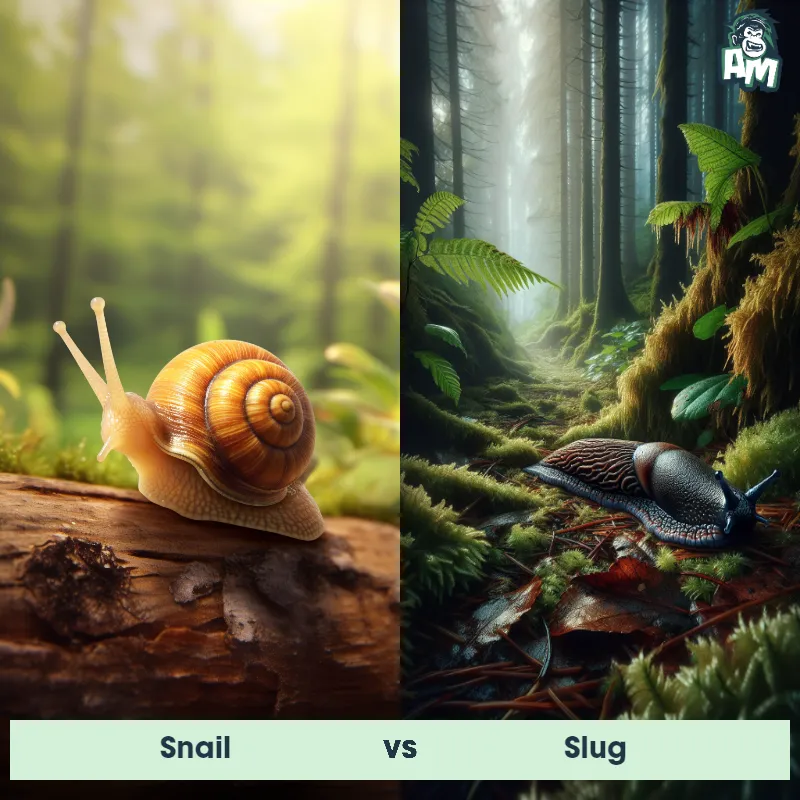The Slug
Slugs are small, slimy creatures that belong to the class Gastropoda. With no legs or a visible shell, they have a soft, elongated body covered in a mucus layer that aids in movement and protects them from drying out. Slugs have two pairs of tentacles on their head, with the longer upper pair bearing their eyes. Some species can grow up to 10 inches long, while others are much smaller. They come in a variety of colors, including shades of brown, gray, and even vibrant hues. These animals are hermaphroditic, meaning they possess both male and female reproductive organs.

| Slug | |
|---|---|
| Size | Up to 10 inches (25.4 cm) in length, depending on species |
| Weight | Up to 0.88 ounces (25 grams), depending on species |
| Speed | 0.03mph (0.048km/h) |
| Key Strength | Ability to regenerate lost body parts |
| Biggest Weakness | Slow movement and lack of protective shell |
| Scientific Name | Gastropoda |
| Family | Gastropod |
| Habitat | Damp environments, often in forests, gardens, and other vegetated areas |
| Geography | Worldwide, except for extreme cold regions |
| Diet | Leaves, fungus, decaying plant material, and other slugs |
| Lifespan | 1 year - 9 years |

The Slug
Slugs are small, slimy creatures that belong to the class Gastropoda. With no legs or a visible shell, they have a soft, elongated body covered in a mucus layer that aids in movement and protects them from drying out. Slugs have two pairs of tentacles on their head, with the longer upper pair bearing their eyes. Some species can grow up to 10 inches long, while others are much smaller. They come in a variety of colors, including shades of brown, gray, and even vibrant hues. These animals are hermaphroditic, meaning they possess both male and female reproductive organs.
Fun Fact: Slug's slime is not only used for locomotion but also acts as a defense mechanism, making them challenging to grasp or eat for predators due to the mucus's slippery texture.
| Slug | |
|---|---|
| Size | Up to 10 inches (25.4 cm) in length, depending on species |
| Weight | Up to 0.88 ounces (25 grams), depending on species |
| Speed | 0.03mph (0.048km/h) |
| Key Strength | Ability to regenerate lost body parts |
| Biggest Weakness | Slow movement and lack of protective shell |
| Scientific Name | Gastropoda |
| Family | Gastropod |
| Habitat | Damp environments, often in forests, gardens, and other vegetated areas |
| Geography | Worldwide, except for extreme cold regions |
| Diet | Leaves, fungus, decaying plant material, and other slugs |
| Lifespan | 1 year - 9 years |
Slug Matchups
We use AI to simulate matchups between the Slug and other animals. Our simulation considers size, strength, and natural predatory behaviors to determine the most likely outcome.
Slug: Diet, Predators, Aggression, and Defensive Behaviors
What do Slugs eat?
Slugs are herbivores and primarily feed on decaying plant matter, fungi, leaves, and fruit. They are known to be especially fond of tender young plants in gardens, making them a common garden pest.
Do Slugs have any predators?
Slugs have several natural predators, including birds, snakes, frogs, toads, hedgehogs, and certain insects. These predators help keep slug populations in check in their natural habitats.
Are Slugs aggressive?
Slugs are not inherently aggressive towards humans. They are generally slow-moving and non-threatening. However, they may consume plants in gardens and can be considered pests by gardeners.
Do Slugs fight?
Slugs do not engage in fights with each other or other animals. They mainly use their slime for movement and defense rather than aggression.
How do Slugs defend themselves?
Slugs rely on their slimy mucus secretions as their primary defense mechanism. This slime helps them move smoothly, as well as protect them from drying out and keep predators at bay. Some slugs can also release a foul-smelling substance when threatened.
What is the biggest weakness of Slugs in a fight?
The biggest weakness of slugs in a fight is their lack of speed and agility. Their slow movements make them vulnerable to predators who are faster and more nimble. Additionally, their soft bodies are easily damaged if attacked.
Fun Fact: Slugs are detritivores, meaning they primarily feed on decaying matter, fungi, and plant material, playing a vital role in the ecosystem's recycling process.
Fun Fact: Some species of slugs are capable of self-amputation, specifically their tail called a "tail autotomy," which they can regenerate within a few weeks. This ability helps them escape when grabbed by predators, sacrificing a part of their body for survival.













